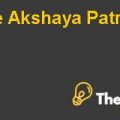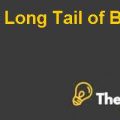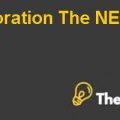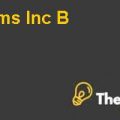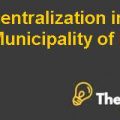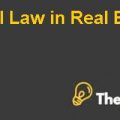
ABSTRACT
This paper digs in the non-monetary ways of motivating employees. The excessive focus of employers on monetary compensation has raised concerns about employees’ motivational levels. It is seen that at an upper hierarchal level, employees are not motivated by money rather they are motivated by non-monetary rewards. This paper highlights models from the academic literature, which sheds light on non-monetary ways of engaging employees. The use of JCM job characteristic model, which include: skill variety, task identity, task significance, autonomy and feedback helps employees develop the five core competencies in the job. In addition, the Job Redesign model inclusive of job rotation, job enrichment, and job enlargement; which are used to emphasize on non-monetary rewards for employees’ workplace satisfaction. They want autonomy in their work and want an environment that directly or indirectly doesn’t impact their personal life. In the end, the paper examines other factors that will help to develop a motivated workforce in the organization. The research paper concludes on the fact that companies need to engage employees through non-monetary rewards in order to gain more commitment and must focus on the internal factors that are job related to increase employee motivational levels. By doing this an organization can achieve sustainability and competitive advantage in the market place because human personnel is the core asset of any organization.
BODY
According to Douglas McGregor, famous behavioral scientist, money doesn’t motivate employees at every hierarchal level. According to McGregor, money only motivates initially when an employee starts climbing up the ladder and once he or reaches the top step or the step where lust for money is no more a motivation to work, then what an employee needs is non-monetary rewards. Money holds worth as a hygienic factor only; therefore, it fails to be a true motivator for higher hierarchal level employees.
At the upper hierarchal levels, employees expect more recognition, esteem and self-actualization from their employers. Recognition is something that motivates employees at a senior level, and it is considered far worthy than monetary rewards. Award distributing ceremonies, pat on the back, endorsing employee efforts in their contribution to the company’s success, and presenting them as a role model for others are also types of non-monetary compensations. In addition to this, empowering the senior management to become trainers for the new employees is another rewarding non-financial route[1].
EMPLOYEE MOTIVATION MODELS: The Non-Monetary Rewards
· Motivation by Job Design: The Job Characteristic Model (JCM)
The concept behind the job characteristic model is that any job can be done by the five core job dimensions, which include skill variety, task identity, task significance, autonomy, and feedback. This model requires the job to have skill variety, in non-monetary terms that means, the job is not clerical and it requires different task in a job. Task identity refers to the completion of the work piece to the full. Task significance refers to the job’s impact on others and its coherence and link with other tasks in a row. Next is autonomy that is the employee needs autonomy for his or her work piece to do it in their very fashion rather than a given set of procedures. Lastly, the feedback is very important for an employee, as an employee moves up the ladder in the task completion his or her reporting authority should take regular feedback on the progress of the task in hand.
Exhibit 1:
· Job Redesign and Scheduling
Three job redesign methods are Job Rotation, Job Enlargement, and Job Enrichment. These three designs are meant to engage employees in their work.
1. Job Rotation:
This refers to moving an employee from one task to another. This is for the restless employees of the organization, who gets bored from the same routine work and wants variety in their tasks[2]. This is also referred to as cross training. But this is subject to lack in its ability to increase motivation or help the employee in developing skill for one job. The pros of this redesign are that it helps employer in filling vacancies at a faster pace and helps employee in scheduling of work, whereas its cons are the training cost and lower productivity due to new work piece each time.
2. Job Enlargement:
Job enlargement refers to expansions of jobs horizontally. Expanding jobs horizontally refers to an increase the number of tasks within the job. That is, if a person is cross checking an employee’s account details, then he must also check their emails, accept and forward their memos, maintain new account information, etc. Everything related to that particular job now needs to be done by that person......................
This is just a sample partial case solution. Please place the order on the website to order your own originally done case solution.


